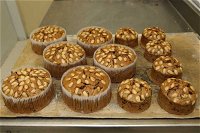
Identify the British Food Trivia Quiz
Here are ten photos of foods from the United Kingdom, all of which have a place as part of their name. You just need to identify each item and match it to its name. You can enlarge the photo by clicking on it if you need a closer look.
by rossian.
Estimated time: 3 mins.









